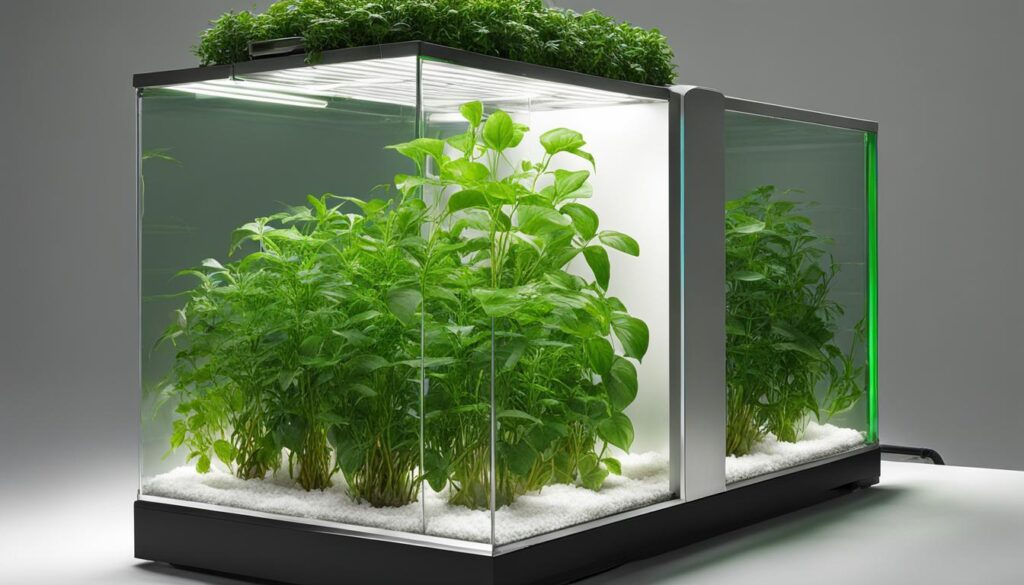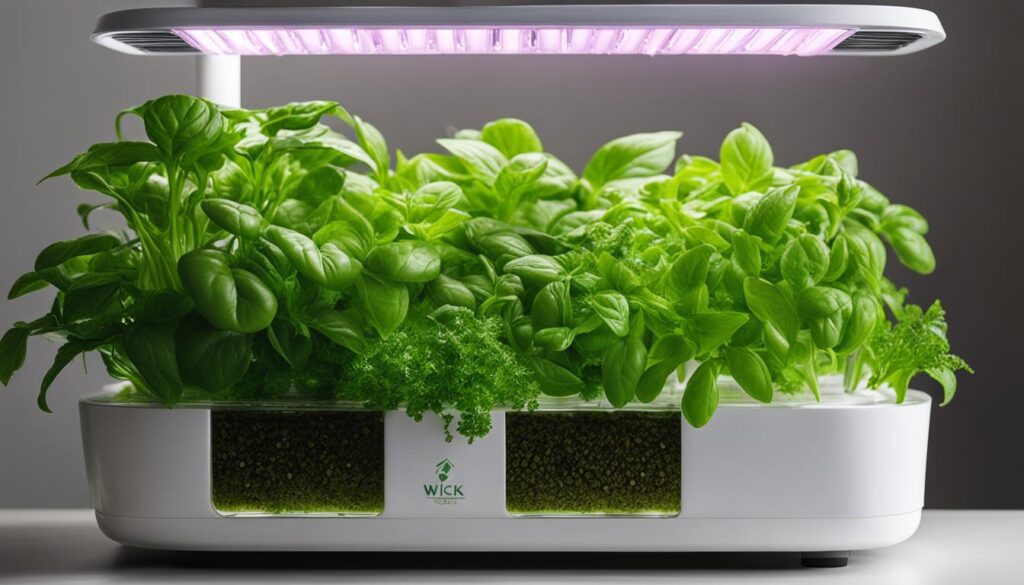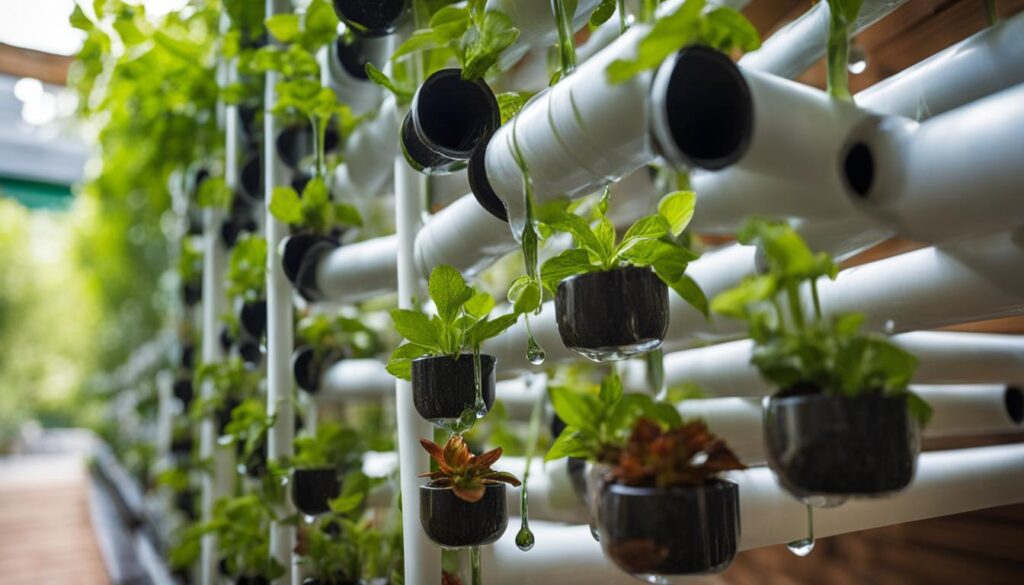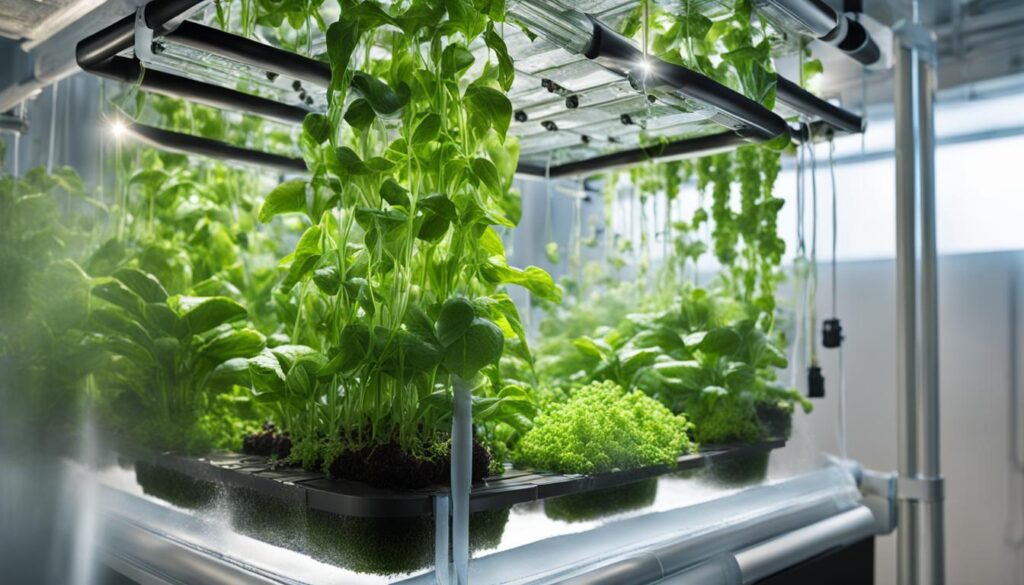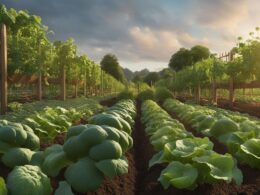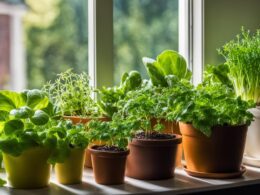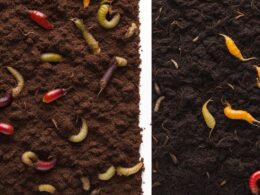Hydroponic systems offer a soil-less growing method that provides plants with water and nutrients through a non-soil growing medium. There are six main types of hydroponic systems: NFT (Nutrient Film Technique), DWC (Deep Water Culture), wick system, ebb and flow, drip systems, and aeroponics. Each system has its own unique features and benefits, making it important to choose the right system based on your specific needs and preferences.
Post Summary
- Hydroponic systems utilize a soil-less growing method for plants.
- There are six main types of hydroponic systems: NFT, DWC, wick system, ebb and flow, drip systems, and aeroponics.
- Choosing the right system depends on your specific needs and preferences.
- Each hydroponic system has its own unique features and benefits.
- Consider factors like plant type and space availability when selecting a hydroponic system.
NFT (Nutrient Film Technique) Hydroponic Systems
NFT hydroponic systems are a popular choice among growers for their simplicity and scalability. This type of hydroponic system involves pumping a nutrient solution into sloped channels, creating a thin film of nutrient-rich water that constantly flows over the plant roots. The excess solution is then collected and returned to the reservoir for recirculation.
One of the key advantages of NFT hydroponic systems is their ability to support plants with small root systems, such as leafy greens and herbs. The continuous flow of nutrient solution provides plants with a constant supply of water and essential nutrients, promoting faster and healthier growth.
Another benefit of NFT hydroponics is its scalability. This system can be easily expanded to accommodate a large number of plants, making it an ideal choice for commercial growers. The simplicity of the NFT system also makes it suitable for beginners who are new to hydroponic gardening.
Benefits of NFT Hydroponic Systems
- Constant supply of water and nutrients promotes faster plant growth
- Supports plants with small root systems
- Easily scalable for large-scale commercial production
- Suitable for beginners due to its simplicity
NFT hydroponic systems provide an efficient and effective way to grow plants without soil. With their ability to support a variety of crops and their scalability, NFT systems are a popular choice among both commercial growers and hobbyists.
DWC (Deep Water Culture) Hydroponic Systems
DWC hydroponic systems are a popular choice among hydroponic gardeners due to their effectiveness in promoting rapid plant growth. This type of hydroponic system involves suspending the plants’ roots in a nutrient solution while providing them with direct access to oxygen. The plants are placed in net pots filled with a grow medium for support. This method allows for larger root systems to develop, resulting in healthier and more productive plants.
The key feature of DWC hydroponics is the use of suspended roots, which enables the plants to absorb nutrients efficiently. The roots are submerged in the nutrient solution, and oxygen is supplied via air stones or diffusers. This oxygenation of the roots allows for enhanced nutrient uptake and promotes faster growth rates compared to traditional soil-based gardening.
Benefits of DWC Hydroponic Systems:
- Enhanced nutrient absorption: The deep water culture method provides direct access to the nutrient solution, allowing plants to absorb nutrients more efficiently.
- Rapid plant growth: The combination of suspended roots and optimal nutrient availability promotes faster growth rates, leading to higher yields.
- Easy maintenance: DWC systems are relatively simple to set up and maintain, making them suitable for both beginners and experienced hydroponic gardeners.
- Water conservation: Because DWC systems recirculate the nutrient solution, they require less water compared to traditional soil-based gardening.
- Flexibility in plant selection: DWC hydroponics can accommodate a wide range of plant types, making it versatile for various gardening needs and preferences.
With DWC hydroponics, you have the flexibility to grow a variety of plants, from leafy greens to fruit-bearing crops. By providing plants with a nutrient-rich environment and ample oxygen, DWC hydroponic systems create optimal conditions for rapid growth and abundant harvests.
Next, we’ll explore another type of hydroponic system: the wick system, which is known for its simplicity and suitability for small plants.
Wick Hydroponic Systems
Wick hydroponic systems are a popular choice for small-scale gardening and individuals looking for a passive and low-maintenance system. These systems utilize a wick to deliver the nutrient solution from a reservoir to the plants’ roots. With no need for electricity, pumps, or aerators, wick systems are simple to set up and maintain.
Wick hydroponic systems are particularly well-suited for growing small plants such as houseplants and herbs. The passive nature of the system means that it requires minimal attention, making it ideal for beginners or individuals with limited time.
One of the advantages of wick systems is their ability to provide a consistent supply of water and nutrients to the plants. However, it is important to note that wick systems may not be as effective for larger plants or those with higher water and nutrient requirements. In such cases, other hydroponic systems such as DWC or ebb and flow may be more suitable.
Advantages of Wick Hydroponic Systems:
- Passive system that requires no electricity or pumps
- Simple setup and minimal maintenance
- Suitable for small plants and herbs
- Provides consistent water and nutrient supply
Overall, wick hydroponic systems offer a convenient and low-cost option for individuals interested in small-scale hydroponic gardening. With their ease of use and maintenance, they provide an accessible entry point into the world of hydroponics.
| Pros | Cons |
|---|---|
| Low-cost and low-maintenance | May not be suitable for larger plants or high water and nutrient requirements |
| Passive system requires no electricity or pumps | May have limited scalability |
| Provides consistent water and nutrient supply |
Ebb and Flow (Flood and Drain) Hydroponic Systems
Ebb and flow hydroponic systems, also known as flood and drain systems, are a popular choice among hydroponic gardeners. These systems work by periodically flooding the grow bed with nutrient solution and then draining it back into the reservoir. The cycles of flooding and draining provide the plants with the necessary water and nutrients while allowing for oxygen to reach the root zone.
This customizable hydroponic system offers several advantages. One of the key benefits of ebb and flow systems is their ability to support a wide range of plant types. Whether you’re growing leafy greens, herbs, or even some root vegetables, ebb and flow hydroponics can accommodate your plants’ specific needs.
A notable advantage of the ebb and flow system is its flexibility. Gardeners can customize the flooding and draining cycles to suit their plants and growing conditions. Some plants thrive with more frequent flooding, while others prefer longer periods of drainage. This adjustability allows for precise control over the growing environment, leading to healthier plants and higher yields.
| Advantages of Ebb and Flow Hydroponic Systems | Disadvantages of Ebb and Flow Hydroponic Systems |
|---|---|
|
|
“Ebb and flow hydroponics offers a versatile and efficient solution for growing a variety of plants. With the ability to customize flooding and draining cycles, gardeners have fine-tuned control over their growing environment. This system is particularly popular among hobby gardeners due to its effectiveness and flexibility.”
Overall, ebb and flow hydroponic systems provide a reliable and customizable solution for hydroponic gardening. With proper monitoring and adjustments, these systems can produce impressive results and allow for the cultivation of a wide range of plants.
Drip Hydroponic Systems
Drip hydroponic systems are a popular choice for both beginner and experienced gardeners due to their adjustable flow and ease of setup. These systems involve pumping a nutrient solution through tubes directly to the base of the plant, allowing for precise control over the amount of solution delivered. The adjustable flow feature enables you to tailor the irrigation to the specific needs of your plants, ensuring they receive the optimal amount of nutrients and water.
“Drip hydroponic systems offer a convenient and efficient way to deliver nutrients to your plants,” says hydroponics expert Dr. Sarah Thompson. “The adjustable flow allows for customization, making it suitable for a wide range of plant types.”
Setting up a drip hydroponic system is relatively straightforward, making it an attractive option for beginners. To get started, you will need a reservoir to hold the nutrient solution, a pump to deliver the solution, tubes to distribute the solution, and drip emitters to control the flow. Simply connect the components, place the drip emitters near the base of each plant, and adjust the flow rate as needed. Drip hydroponic systems can be used with a variety of growing mediums, including perlite, coco coir, and rockwool.
One of the advantages of drip hydroponic systems is their versatility. They can be used in both indoor and outdoor settings and are suitable for a wide range of plants, including vegetables, herbs, and flowers. Whether you have a small balcony garden or a larger indoor grow room, a drip hydroponic system can help you maximize your plant’s growth potential and yield.
Drip Hydroponics at a Glance
| Advantages | Considerations |
|---|---|
|
|
Aeroponic Hydroponic Systems
Aeroponic hydroponic systems utilize a unique method of growing plants by suspending their roots in the air and spraying them with a continuous nutrient solution. This innovative system offers several advantages and is gaining popularity among hydroponic enthusiasts.
The suspended roots in aeroponic systems allow for maximum oxygen exposure, promoting rapid and efficient nutrient absorption. The continuous nutrient spray ensures that plants receive a consistent supply of essential elements, resulting in vigorous growth and high yield potential.
One of the key benefits of aeroponics is its versatility in accommodating various plant types. From leafy greens to flowering crops, aeroponic systems can support the growth of almost any plant, making it a popular choice for both commercial and hobbyist growers.
Suspended Roots in Aeroponics Table:
| Benefits | Explanation |
|---|---|
| Enhanced Nutrient Absorption | The suspended roots in aeroponics allow for maximum oxygen exposure, facilitating efficient nutrient uptake. |
| Rapid Growth and High Yields | The continuous nutrient spray ensures plants receive a consistent supply of essential elements, resulting in vigorous growth and increased crop productivity. |
| Versatility for Different Plant Types | Aeroponic systems can accommodate a wide range of plant species, making it suitable for diverse agricultural applications. |
While aeroponic systems offer numerous benefits, it’s essential to note that they can be more challenging to build and maintain compared to other hydroponic systems. Proper setup and monitoring of the misting nozzles are crucial to ensure all roots receive adequate nutrient spray.
Overall, aeroponic hydroponic systems provide an innovative and efficient method of plant cultivation. With optimal oxygen exposure and a continuous nutrient supply, these systems support robust growth and high yields for a variety of plant species.
Kratky Hydroponic Systems
Kratky hydroponic systems are a popular choice for beginner hydroponic gardeners due to their simplicity and minimal requirements. This passive system eliminates the need for water or air pumps, making it easy to set up and maintain. The plants’ roots are suspended in a reservoir filled with a nutrient solution, with an air gap to allow for root respiration. As the plants take in the solution, the water level drops, and more nutrient solution can be added as needed.
One of the advantages of the Kratky system is its suitability for small plants that do not require much water. This makes it ideal for growing herbs, lettuce, and other leafy greens. The simplicity of the system also means that it requires minimal monitoring and maintenance, making it a convenient choice for those with limited time or space.
While the Kratky system is a passive system that works well for certain plants, it may not be suitable for all types of plants. Larger plants or plants with high water requirements may not thrive in this system. Additionally, the nutrient levels in the solution may need to be adjusted periodically to ensure optimal plant growth. However, for beginners or those looking for a low-maintenance hydroponic system, the Kratky method offers a simple and effective solution.
Advantages of Kratky Hydroponic Systems:
- No electricity, pumps, or aerators required
- Minimal maintenance and monitoring
- Suitable for small plants with low water requirements
- Easy to set up and use
“The Kratky hydroponic system is a great option for beginners or those looking for a low-maintenance gardening solution. Its passive design and simple setup make it ideal for small plants with low water requirements. While it may not be suitable for all types of plants, the Kratky method offers an accessible entry point into the world of hydroponics.”
| Advantages | Limitations |
|---|---|
| Minimal setup and maintenance | Not suitable for large plants |
| No electricity or pumps required | Requires periodic adjustment of nutrient levels |
| Suitable for small plants with low water requirements |
Benefits of Hydroponic Systems
Hydroponic systems offer numerous advantages over traditional soil-based gardening methods. One of the key benefits is faster plant growth. With hydroponics, plants have direct access to water and nutrients, allowing them to grow at an accelerated rate compared to plants grown in soil. This rapid growth can result in higher yields and a quicker harvest, making hydroponics an appealing option for commercial growers and home gardeners alike.
Precise nutrient control is another significant benefit of hydroponic systems. In traditional gardening, it can be challenging to achieve the ideal balance of nutrients for optimal plant health. Hydroponic systems allow for precise control of nutrient levels, ensuring that plants receive the exact amounts they need for healthy growth. This precise control minimizes the risk of over- or under-feeding, promoting healthier plants and maximizing productivity.
Another advantage of hydroponics is the ability to grow plants in limited space or unfavorable climates. With hydroponic systems, plants can be grown vertically or in compact, controlled environments, maximizing the use of available space. This is especially beneficial for urban gardening or regions with harsh weather conditions. Hydroponics allows for year-round cultivation, regardless of outdoor temperature or growing seasons, providing a consistent supply of fresh produce.
| Benefits of Hydroponic Systems |
|---|
| Faster plant growth |
| Precise nutrient control |
| Ability to grow in limited space or unfavorable climates |
Moreover, hydroponic systems offer efficient water usage, making them environmentally friendly. Traditional gardening methods often result in water wastage due to runoff or evaporation. Hydroponics recirculates water and nutrients, minimizing water consumption. Additionally, by eliminating soil, hydroponic systems reduce the risk of pests and diseases that are commonly associated with traditional gardening. This allows for cleaner and more sustainable cultivation practices.
In summary, hydroponic systems provide faster plant growth, precise nutrient control, the ability to grow in limited space or unfavorable climates, efficient water usage, and reduced risk of pests and diseases. These benefits make hydroponics an attractive option for individuals looking to maximize their gardening productivity while minimizing environmental impact.
Factors to Consider When Choosing a Hydroponic System
When embarking on a hydroponic gardening journey, it is essential to carefully consider several factors to ensure you select the right system for your specific needs. By taking into account the plant type you wish to grow, the available space, and your budget, you can make an informed decision that will set you up for success.
Plant Type
First and foremost, consider the type of plants you intend to cultivate in your hydroponic system. Certain plants thrive better in specific types of hydroponic systems. For example, NFT (Nutrient Film Technique) systems are ideal for leafy greens with smaller root systems, while DWC (Deep Water Culture) systems are suitable for plants with larger root systems or high fruit production. Understanding the requirements of your chosen plants will guide you towards the most appropriate hydroponic system.
Space Availability
The amount of space you have plays a significant role in determining the size and design of your hydroponic system. If you have limited space, compact systems like wick or Kratky hydroponics may be more suitable. On the other hand, if you have ample space, you can consider larger systems like ebb and flow or aeroponics. It’s important to assess your space availability and choose a system that can comfortably fit within your designated area.
Customization and Budget
Consider your level of customization and your budget when selecting a hydroponic system. Some systems offer more flexibility for adjustments and modifications, allowing you to customize factors such as nutrient delivery and lighting. However, these systems may come at a higher cost. Evaluate your budget and determine the level of customization you require to make an informed decision.
By carefully considering these factors – plant type, space availability, customization, and budget – you can confidently choose the right hydroponic system for your specific needs. With the proper system in place, you’ll be well on your way to enjoying the benefits of hydroponic gardening and nurturing thriving plants all year round.
Tips for Successful Hydroponic Gardening
When it comes to hydroponic gardening, there are several key tips to keep in mind to ensure successful results. Paying attention to nutrient balance, system maintenance, and other important factors will help you create a thriving hydroponic garden.
1. Maintain Proper Nutrient Balance:
The nutrient solution is a vital component of hydroponic systems as it provides essential elements for plant growth. It is crucial to monitor the nutrient balance regularly to ensure that plants are receiving the right amount of nutrients. Adjust the nutrient levels based on the plants’ growth stages and specific requirements to promote optimal growth and prevent deficiencies or nutrient excesses.
2. Regular System Maintenance:
Keeping your hydroponic system in good condition is essential for its overall functionality and the health of your plants. Regularly check and clean the system components, such as pumps, filters, and irrigation lines, to prevent clogs and ensure smooth operation. Monitor the pH levels of the nutrient solution and adjust as needed to maintain the optimal pH range for your plants. Additionally, inspect the plants regularly for any signs of disease or pest infestation and take appropriate measures to address any issues promptly.
3. Provide Adequate Lighting:
Light is crucial for plant growth in hydroponic systems, especially for indoor setups. Ensure that your plants receive the right amount and quality of light by using appropriate lighting systems, such as LED grow lights. Consider the light intensity, duration, and spectrum required by different plant species and adjust accordingly. Proper lighting will support healthy photosynthesis, promote strong growth, and help prevent issues such as leggy plants or stunted growth.
By following these tips, you can enhance your hydroponic gardening experience and achieve impressive results in your indoor or outdoor hydroponic garden. Remember to continually learn and experiment with different techniques to optimize your system and cultivate thriving plants.
Conclusion
When it comes to hydroponic gardening, choosing the right system is crucial for your success. Each type of hydroponic system offers its own set of advantages and limitations, so it’s important to consider factors such as the type of plants you want to grow, the space available, and your customization preferences. By understanding the different types of hydroponic systems and their unique features, you can make an informed decision and achieve optimal results in your hydroponic garden.
Whether you’re interested in NFT systems, DWC systems, wick systems, ebb and flow systems, drip systems, aeroponic systems, or Kratky systems, there’s a hydroponic system out there that’s perfect for you. NFT systems are ideal for growing small-rooted plants like leafy greens, while DWC systems promote rapid plant growth and can accommodate larger root systems. Wick systems are great for small houseplants, while ebb and flow systems offer customization options and are suitable for a wide range of plants. Drip systems are easy to set up and adjustable for different plant needs, and aeroponic systems provide continuous nutrient spray for optimal plant growth. Finally, Kratky systems are simple and passive, making them an excellent choice for small plants.
By weighing the benefits and features of each system against your specific requirements, you can choose a hydroponic system that aligns with your goals and ensures the success of your gardening endeavors. Remember to consider factors such as plant type, space availability, and customization preferences when making your decision. With the right hydroponic system in place, you can enjoy faster plant growth, higher yields, precise nutrient control, reduced water usage, and the ability to grow plants in limited space or unfavorable climates. Say goodbye to soil and embrace the clean and sustainable world of hydroponic gardening!
What Are the Different Types of Hydroponics and How Do They Compare to the Wick System?
There are several types of hydroponic systems, each with its own set of pros and cons. Some common types include deep water culture, nutrient film technique, and aeroponics. When comparing these to the pros and cons of wick system hydroponics, it’s important to consider factors like cost, complexity, and efficiency.
FAQ
What are the different types of hydroponic systems?
The different types of hydroponic systems include NFT (Nutrient Film Technique), DWC (Deep Water Culture), wick system, ebb and flow, drip systems, aeroponics, and Kratky.
What is NFT hydroponic system?
NFT hydroponic systems involve pumping a nutrient solution into sloped channels, allowing the excess solution to flow back into the reservoir. These systems are best suited for plants with small root systems.
How does DWC hydroponic system work?
DWC hydroponic systems suspend the plant’s roots in a nutrient solution while providing oxygen directly to the roots. Plants are placed in net pots with a grow medium for support.
What is a wick hydroponic system?
Wick hydroponic systems are the simplest type of hydroponic systems and require no electricity, pumps, or aerators. Plants are placed in a grow medium with a wick running from the plants to a reservoir of nutrient solution.
How does an ebb and flow hydroponic system work?
Ebb and flow hydroponic systems involve flooding the grow bed with nutrient solution and then draining it back into the reservoir. These systems can be customized with automatic drains for faster and more frequent flooding and draining cycles.
What is a drip hydroponic system?
Drip hydroponic systems involve pumping the nutrient solution through tubes directly to the base of the plant. Drip emitters control the flow of the solution, saturating the grow medium.
How does an aeroponic system work?
Aeroponic systems suspend the plants in the air and spray the roots with a nutrient solution. Mist nozzles deliver a fine spray that provides continuous access to nutrients.
What is a Kratky hydroponic system?
Kratky hydroponic systems are a passive method that does not require water or air pumps. The plant’s roots are suspended in a reservoir filled with nutrient solution, with an air gap to allow for root respiration.
What are the benefits of hydroponic systems?
Benefits of hydroponic systems include faster plant growth, higher yields, precise control over nutrient levels, reduced water usage, and the ability to grow plants in limited space or unfavorable climates.
What factors should be considered when choosing a hydroponic system?
Factors to consider when choosing a hydroponic system include the type of plant you are growing, the amount of space available, the level of customization desired, and the budget.
What are some tips for successful hydroponic gardening?
Some tips for successful hydroponic gardening include maintaining a proper nutrient balance, monitoring pH levels regularly, providing adequate lighting for plant growth, and regularly maintaining and cleaning the system.






